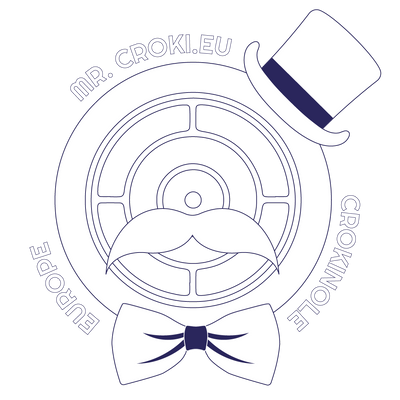Crokinole, a classic tabletop game that has entertained families and friends for generations, boasts a rich history that many enthusiasts might be unaware of. This beloved dexterity game has its roots in Canada and has evolved over time, captivating players around the world. In this blog post, we'll delve into the origins and evolution of crokinole, exploring its journey from a humble pastime to a competitive sport with dedicated followers.
Section 1: The Birth of Crokinole in 19th Century Canada
Although the exact origins of crokinole are debated, most historians agree that the game was born in 19th century Canada, particularly in the rural regions of Ontario and Quebec. Some accounts suggest that the game was inspired by European board games like carrom or a French game called "pichenotte," which Canadian immigrants adapted and modified to create crokinole.
The first known crokinole board was crafted by craftsman Eckhardt Wettlaufer in 1876 as a birthday gift for his son. Wettlaufer's board, currently housed in the Joseph Schneider Haus Museum in Kitchener, Ontario, is a testament to the game's Canadian heritage and offers insights into its early design elements.
Section 2: Crokinole's Growing Popularity
By the late 19th and early 20th centuries, crokinole had spread across Canada and the northern United States, establishing itself as a popular parlor game. The game's simplicity and accessibility made it a hit at family gatherings and social events. With the advent of mass production, crokinole boards became more widely available, further fueling the game's growth.
In 1899, American businessman Joshua K. Ingalls filed a patent for an "improved game-board" design that closely resembled a crokinole board. This design included a central hole and concentric scoring rings, demonstrating that the game had already gained traction beyond Canada's borders.
Section 3: Crokinole Becomes a Competitive Sport
As crokinole's popularity soared, enthusiasts sought to formalize the game's rules and organize competitive tournaments. In the 20th century, various regional and national crokinole championships emerged. Among the most notable is the World Crokinole Championship, held annually in Tavistock, Ontario. This prestigious event, which began in 1999, attracts top players from around the world and has played a significant role in elevating crokinole to a competitive sport.
Section 4: Modern-Day Crokinole
Today, crokinole maintains its status as a beloved pastime, with a dedicated community of players and fans. The game's design has evolved over time, with boards now available in various sizes, materials, and styles. However, the core gameplay remains largely unchanged, a testament to the game's enduring appeal.
Crokinole has also expanded into the digital realm, with apps and online platforms allowing enthusiasts to enjoy the game virtually. Additionally, the rise of social media has facilitated the growth of crokinole communities, where players can share tips, strategies, and experiences.
Section 5: Preserving Crokinole's Rich History
Efforts to preserve and celebrate crokinole's history are underway, with museums and collectors showcasing vintage boards and memorabilia. For example, the World Crokinole Championship includes a "Crokinole Heritage Display," featuring antique boards and other artifacts that highlight the game's storied past.

